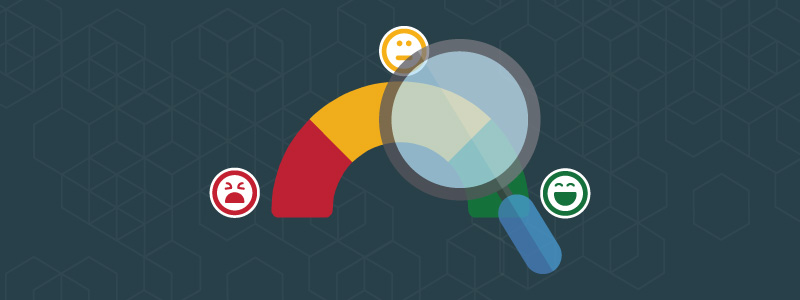Charting out your CX Excellence with a CX Maturity Roadmap: Part 1
Charting out your CX Excellence with a CX Maturity Roadmap: Part 1

The thing you need to remember about your CX journey is that it’s not something you can do when your whim takes over and discard when you feel like it. The other thing you should remember is the progress towards CX goals requires your CX program to be robust and exponential. In order to achieve CX excellence, you need to have a roadmap that gives you definitive steps to reach CX maturity levels.
Keeping this in mind, on 11th May LitmusWorld hosted a CX Masterclass with Rajdeep Charan – Sr. GM CRM & Customer Experience, Eureka Forbes, and Birender Ahluwalia – CEO, The Positivity Company. Here’s a sneak peek of what was discussed. Under part 1 of the article, we’ll be discussing the 5 pillars that impact CX maturity levels. Understanding these pillars and where your CX initiative falls under the maturity roadmap can help you charter a more streamlined approach to achieving your CX vision.
5 of the 10 pillars that impact CX maturity levels:
#1 Leadership
[moving from dictating to collaborating on CX outcomes]

How important is CX for the leaders of the company? Do they reflect on it on a daily or an annual basis? 38% of the respondents to our CX Maturity Assessment Test feel that their senior leaders get involved only on a quarter or annual basis.
If you’re at Level 1 of your maturity level, you probably understand the concept of CX and know it’s important to begin but it is not a burning requirement. However, if you’re at a Level 3 or a Level 4 in your CX maturity, you probably have a formal structure in place and CX outcomes are a part of employee KPIs.
#2 Culture and Values
[moving from poorly defined CX vision to fully integrating it into the culture]
Once your senior leadership gets involved in driving CX, the next question is where can these culture and values be found. Can they be found only on paper or are they owned and practised by the employees as well. And only 25% of our test respondents believe that the culture and values are in the hearts and minds of the people.
A good example where CX was integrated into the hearts and minds of the employees is FedEx. Their CX proposition is simple: every package, a golden package. The proposition helped in communicating to the frontline employees that irrespective of the size of the package, there are hopes attached to it. Thus it deserves to be delivered on time.
#3 Strategy and Planning
[moving from no goals to maintaining a proper planning process]

Without a proper CX vision and progress towards CX goals, your organization’s CX will not be able to provide the who, the what and the wow – as defined by IBM for any interaction that they may have with a customer. Only 23% said their organizations had a formal task force to look into CX.
So if you’re at Level 2 of CX maturity levels, there is some amount of strategic planning that is happening but it’s mostly being dictated. As opposed to if you’re at Level 5, strategy drives critical organizational decisions and is continuously monitored and modified as per changing scenarios.
In order to move up the CX maturity ladder, what is required is for your CX vision to come into implementation with the use of a formal structure, technology, and how you will collect and use the data generated.
#4 Alignment
[moving from narrow focus with no customer input to proper alignment to a common purpose that is continuously improved]
As the word suggests, this pillar acts like a pitstop i.e. how well aligned are the leadership, culture and values of an organization and their strategic planning when it comes to CX outcomes. A proper structure would essentially mean that the CX vision, customer needs, strategy and employee rewards and recognition are all cascaded down to the last employee and aligned.
As an example of what that would look like, a well-known coffee shop chain ensures that any policy changes are updated in manuals as well. Outlet employees are given proper training so they’re in line with the changes. For them, it’s not just about serving coffee to their customers but creating an experience for them.
#5 Performance Measurement
[moving from no data or ad hoc data collection to a comprehensive measurement mechanism like Net Promoter Score NPS]

Now all your CX initiatives lead to the generation of data but the question is, does your organization have a formal review mechanism for performance management. And the natural part 2 of this question is, who is held accountable for this performance? Is it just the frontline employees or also the CEO? Results from our assessment test showed only about 20% of organizations hold all employees responsible.
One method that Oberoi Hotels uses to measure performance is to actively discourage tips. Instead, the customers are encouraged to give the name of the staff who served them in a feedback form. Another consumer company invites outsiders for a day to work for them and tell them what is going wrong so they can improve their mechanisms.
As you can see, the pillars we have discussed so far give you a simple 5-step approach to ensuring your CX journey begins on the right foot. We also have collated all resources from the Masterclass here which you can access to understand the pillars further.
In part 2 of this article, we will discuss the next set of pillars i.e. technology, performance management, orientation, impact assessment and sustainability. Stay tuned.

